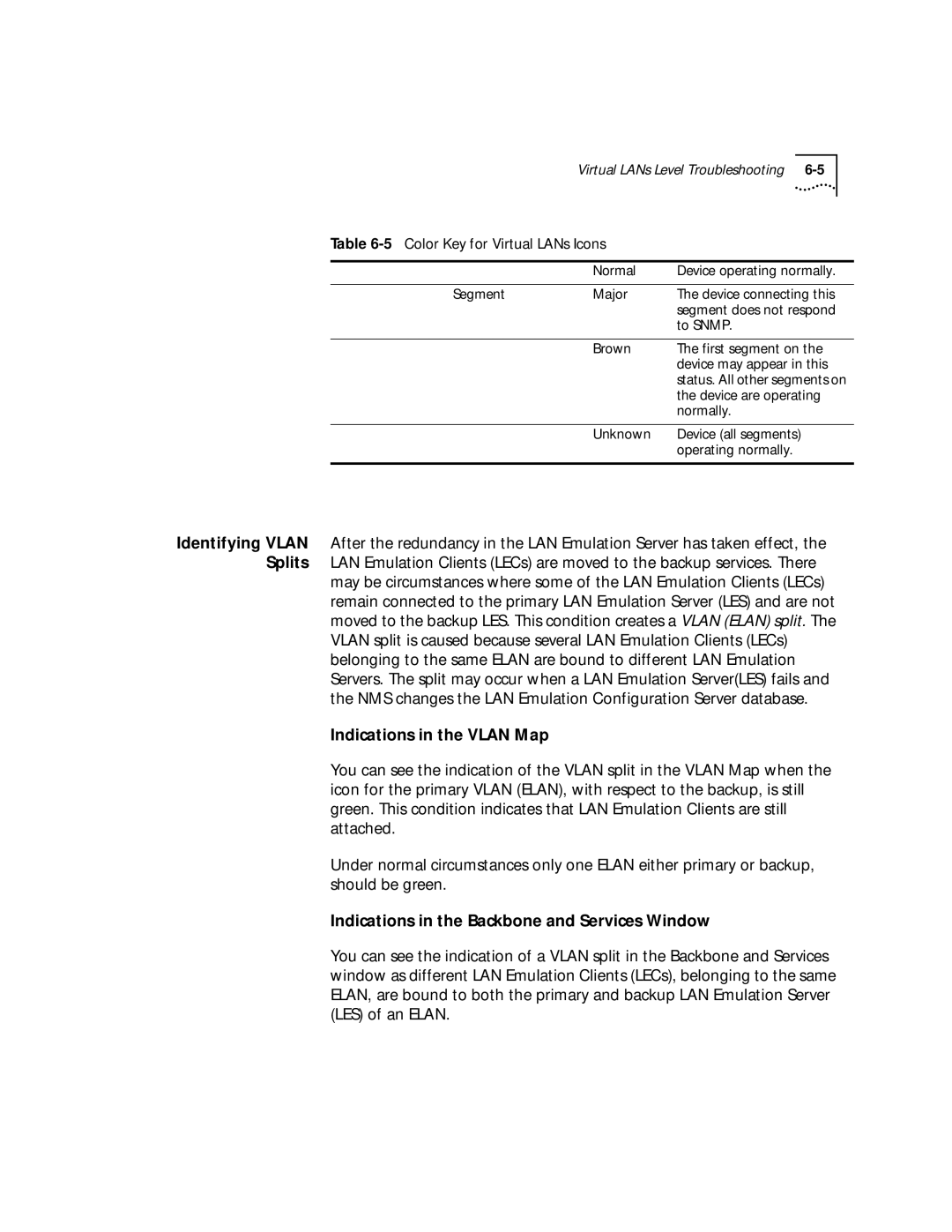
Virtual LANs Level Troubleshooting
Table 6-5 Color Key for Virtual LANs Icons
| Normal | Device operating normally. |
|
|
|
Segment | Major | The device connecting this |
|
| segment does not respond |
|
| to SNMP. |
|
|
|
| Brown | The first segment on the |
|
| device may appear in this |
|
| status. All other segments on |
|
| the device are operating |
|
| normally. |
|
|
|
| Unknown | Device (all segments) |
|
| operating normally. |
|
|
|
Identifying VLAN After the redundancy in the LAN Emulation Server has taken effect, the Splits LAN Emulation Clients (LECs) are moved to the backup services. There
may be circumstances where some of the LAN Emulation Clients (LECs) remain connected to the primary LAN Emulation Server (LES) and are not moved to the backup LES. This condition creates a VLAN (ELAN) split. The VLAN split is caused because several LAN Emulation Clients (LECs) belonging to the same ELAN are bound to different LAN Emulation Servers. The split may occur when a LAN Emulation Server(LES) fails and the NMS changes the LAN Emulation Configuration Server database.
Indications in the VLAN Map
You can see the indication of the VLAN split in the VLAN Map when the icon for the primary VLAN (ELAN), with respect to the backup, is still green. This condition indicates that LAN Emulation Clients are still attached.
Under normal circumstances only one ELAN either primary or backup, should be green.
Indications in the Backbone and Services Window
You can see the indication of a VLAN split in the Backbone and Services window as different LAN Emulation Clients (LECs), belonging to the same ELAN, are bound to both the primary and backup LAN Emulation Server (LES) of an ELAN.
